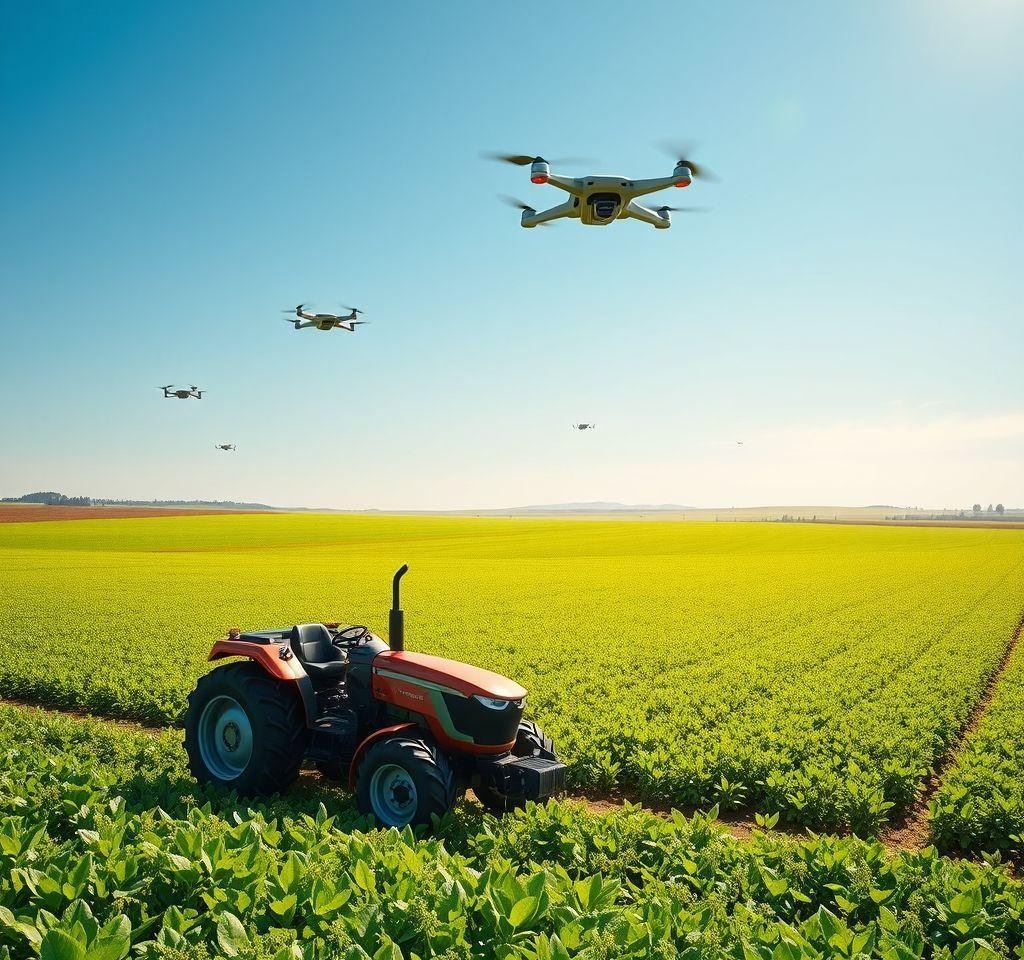AI-Driven Predictive Maintenance: The Future of Industrial Efficiency
In an era where unplanned downtime costs industries billions annually, AI-powered predictive maintenance is revolutionizing operational efficiency. This article explores how artificial intelligence transforms asset management, from real-time anomaly detection to data-driven decision-making, and provides actionable strategies for industrial adoption.
The Evolution of Maintenance Strategies
The evolution of maintenance has seen a shift from reactive to proactive strategies. Reactive maintenance, addressing issues only after failure, often leads to unplanned downtime and increased costs. Traditional methods like scheduled maintenance, while preventative, can result in unnecessary interventions. These approaches lack real-time insights into asset health.
The emergence of digital technologies has revolutionized maintenance practices. Digital twins, virtual replicas of physical assets, enable simulations and performance analysis. IoT sensors provide continuous data streams on equipment conditions. Machine learning algorithms analyze this data to predict potential failures. This convergence facilitates a transition to AI-driven predictive maintenance. This approach anticipates problems before they occur, optimizing maintenance schedules and minimizing disruptions. For instance, intelligent automation in manufacturing leverages these technologies to enhance operational efficiency. Similarly, industrial IoT applications drive predictive maintenance across various sectors.
Core Technologies Powering Predictive Maintenance
The evolution of maintenance has seen a shift from reactive to proactive strategies. Reactive maintenance, addressing issues only after failure, often leads to unplanned downtime and increased costs. Traditional methods like scheduled maintenance, while preventative, can result in unnecessary interventions. These approaches lack real-time insights into asset health.
The emergence of digital technologies has revolutionized maintenance practices. Digital twins, virtual replicas of physical assets, enable simulations and performance analysis. IoT sensors provide continuous data streams on equipment conditions. Machine learning algorithms analyze this data to predict potential failures. This convergence facilitates a transition to AI-driven predictive maintenance. This approach anticipates problems before they occur, optimizing maintenance schedules and minimizing disruptions. For instance, intelligent automation in manufacturing leverages these technologies to enhance operational efficiency. Similarly, industrial IoT applications drive predictive maintenance across various sectors.
Implementation Roadmap for Industrial Adoption
The evolution of maintenance has seen a shift from reactive to proactive strategies. Reactive maintenance, addressing issues only after failure, often leads to unplanned downtime and increased costs. Traditional methods like scheduled maintenance, while preventative, can result in unnecessary interventions. These approaches lack real-time insights into asset health.
The emergence of digital technologies has revolutionized maintenance practices. Digital twins, virtual replicas of physical assets, enable simulations and performance analysis. IoT sensors provide continuous data streams on equipment conditions. Machine learning algorithms analyze this data to predict potential failures. This convergence facilitates a transition to AI-driven predictive maintenance. This approach anticipates problems before they occur, optimizing maintenance schedules and minimizing disruptions. For instance, intelligent automation in manufacturing leverages these technologies to enhance operational efficiency. Similarly, industrial IoT applications drive predictive maintenance across various sectors.
ROI Analysis: Cost Reduction and Uptime Gains
The evolution of maintenance has seen a shift from reactive to proactive strategies. Reactive maintenance, addressing issues only after failure, often leads to unplanned downtime and increased costs. Traditional methods like scheduled maintenance, while preventative, can result in unnecessary interventions. These approaches lack real-time insights into asset health.
The emergence of digital technologies has revolutionized maintenance practices. Digital twins, virtual replicas of physical assets, enable simulations and performance analysis. IoT sensors provide continuous data streams on equipment conditions. Machine learning algorithms analyze this data to predict potential failures. This convergence facilitates a transition to AI-driven predictive maintenance. This approach anticipates problems before they occur, optimizing maintenance schedules and minimizing disruptions. For instance, intelligent automation in manufacturing leverages these technologies to enhance operational efficiency. Similarly, industrial IoT applications drive predictive maintenance across various sectors.
Overcoming Barriers to AI Integration
The evolution of maintenance has seen a shift from reactive to proactive strategies. Reactive maintenance, addressing issues only after failure, often leads to unplanned downtime and increased costs. Traditional methods like scheduled maintenance, while preventative, can result in unnecessary interventions. These approaches lack real-time insights into asset health.
The emergence of digital technologies has revolutionized maintenance practices. Digital twins, virtual replicas of physical assets, enable simulations and performance analysis. IoT sensors provide continuous data streams on equipment conditions. Machine learning algorithms analyze this data to predict potential failures. This convergence facilitates a transition to AI-driven predictive maintenance. This approach anticipates problems before they occur, optimizing maintenance schedules and minimizing disruptions. For instance, intelligent automation in manufacturing leverages these technologies to enhance operational efficiency. Similarly, industrial IoT applications drive predictive maintenance across various sectors.
The Evolution of Maintenance Strategies
Core technologies drive AI-based predictive maintenance. AI algorithms process data from diverse sensors. Neural networks learn complex patterns to forecast faults. Anomaly detection identifies deviations indicative of potential failures. These algorithms analyze vibration, temperature, and pressure data.
Vibration analysis uses machine learning to detect imbalances or wear. Thermal imaging integration identifies overheating components. AI models correlate sensor data with failure modes. This enables accurate fault prediction and timely intervention. Predictive models are trained and validated using historical data. Real-time data enhances the accuracy of predictions. Early fault detection minimizes downtime and optimizes maintenance. For example, AI in predictive analytics showcases the power of these algorithms. Also, AI and edge computing can be used for faster processing of sensor data.
Core Technologies Powering Predictive Maintenance
Core technologies drive AI-based predictive maintenance. AI algorithms process data from diverse sensors. Neural networks learn complex patterns to forecast faults. Anomaly detection identifies deviations indicative of potential failures. These algorithms analyze vibration, temperature, and pressure data.
Vibration analysis uses machine learning to detect imbalances or wear. Thermal imaging integration identifies overheating components. AI models correlate sensor data with failure modes. This enables accurate fault prediction and timely intervention. Predictive models are trained and validated using historical data. Real-time data enhances the accuracy of predictions. Early fault detection minimizes downtime and optimizes maintenance. For example, AI in predictive analytics showcases the power of these algorithms. Also, AI and edge computing can be used for faster processing of sensor data.
Implementation Roadmap for Industrial Adoption
Core technologies drive AI-based predictive maintenance. AI algorithms process data from diverse sensors. Neural networks learn complex patterns to forecast faults. Anomaly detection identifies deviations indicative of potential failures. These algorithms analyze vibration, temperature, and pressure data.
Vibration analysis uses machine learning to detect imbalances or wear. Thermal imaging integration identifies overheating components. AI models correlate sensor data with failure modes. This enables accurate fault prediction and timely intervention. Predictive models are trained and validated using historical data. Real-time data enhances the accuracy of predictions. Early fault detection minimizes downtime and optimizes maintenance. For example, AI in predictive analytics showcases the power of these algorithms. Also, AI and edge computing can be used for faster processing of sensor data.
ROI Analysis: Cost Reduction and Uptime Gains
Core technologies drive AI-based predictive maintenance. AI algorithms process data from diverse sensors. Neural networks learn complex patterns to forecast faults. Anomaly detection identifies deviations indicative of potential failures. These algorithms analyze vibration, temperature, and pressure data.
Vibration analysis uses machine learning to detect imbalances or wear. Thermal imaging integration identifies overheating components. AI models correlate sensor data with failure modes. This enables accurate fault prediction and timely intervention. Predictive models are trained and validated using historical data. Real-time data enhances the accuracy of predictions. Early fault detection minimizes downtime and optimizes maintenance. For example, AI in predictive analytics showcases the power of these algorithms. Also, AI and edge computing can be used for faster processing of sensor data.
Overcoming Barriers to AI Integration
Core technologies drive AI-based predictive maintenance. AI algorithms process data from diverse sensors. Neural networks learn complex patterns to forecast faults. Anomaly detection identifies deviations indicative of potential failures. These algorithms analyze vibration, temperature, and pressure data.
Vibration analysis uses machine learning to detect imbalances or wear. Thermal imaging integration identifies overheating components. AI models correlate sensor data with failure modes. This enables accurate fault prediction and timely intervention. Predictive models are trained and validated using historical data. Real-time data enhances the accuracy of predictions. Early fault detection minimizes downtime and optimizes maintenance. For example, AI in predictive analytics showcases the power of these algorithms. Also, AI and edge computing can be used for faster processing of sensor data.
The Evolution of Maintenance Strategies
Successful AI deployment requires a phased approach. Data collection is the first step, gathering historical and real-time data. Model training follows, using relevant algorithms to predict failures. Integration with existing systems ensures seamless data flow. Workforce training equips personnel to interpret AI insights.
Scalability ensures the system handles increasing data volumes. Interoperability allows data exchange across different platforms. Addressing these challenges ensures long-term effectiveness. A robust cybersecurity framework is also needed, as noted in this article. Furthermore, automation and workforce transformation strategies are crucial for adapting to AI-driven changes. Proper planning facilitates a smooth transition to AI-driven predictive maintenance. This maximizes efficiency and minimizes operational disruptions.
Core Technologies Powering Predictive Maintenance
Successful AI deployment requires a phased approach. Data collection is the first step, gathering historical and real-time data. Model training follows, using relevant algorithms to predict failures. Integration with existing systems ensures seamless data flow. Workforce training equips personnel to interpret AI insights.
Scalability ensures the system handles increasing data volumes. Interoperability allows data exchange across different platforms. Addressing these challenges ensures long-term effectiveness. A robust cybersecurity framework is also needed, as noted in this article. Furthermore, automation and workforce transformation strategies are crucial for adapting to AI-driven changes. Proper planning facilitates a smooth transition to AI-driven predictive maintenance. This maximizes efficiency and minimizes operational disruptions.
Implementation Roadmap for Industrial Adoption
Successful AI deployment requires a phased approach. Data collection is the first step, gathering historical and real-time data. Model training follows, using relevant algorithms to predict failures. Integration with existing systems ensures seamless data flow. Workforce training equips personnel to interpret AI insights.
Scalability ensures the system handles increasing data volumes. Interoperability allows data exchange across different platforms. Addressing these challenges ensures long-term effectiveness. A robust cybersecurity framework is also needed, as noted in this article. Furthermore, automation and workforce transformation strategies are crucial for adapting to AI-driven changes. Proper planning facilitates a smooth transition to AI-driven predictive maintenance. This maximizes efficiency and minimizes operational disruptions.
ROI Analysis: Cost Reduction and Uptime Gains
Successful AI deployment requires a phased approach. Data collection is the first step, gathering historical and real-time data. Model training follows, using relevant algorithms to predict failures. Integration with existing systems ensures seamless data flow. Workforce training equips personnel to interpret AI insights.
Scalability ensures the system handles increasing data volumes. Interoperability allows data exchange across different platforms. Addressing these challenges ensures long-term effectiveness. A robust cybersecurity framework is also needed, as noted in this article. Furthermore, automation and workforce transformation strategies are crucial for adapting to AI-driven changes. Proper planning facilitates a smooth transition to AI-driven predictive maintenance. This maximizes efficiency and minimizes operational disruptions.
Overcoming Barriers to AI Integration
Successful AI deployment requires a phased approach. Data collection is the first step, gathering historical and real-time data. Model training follows, using relevant algorithms to predict failures. Integration with existing systems ensures seamless data flow. Workforce training equips personnel to interpret AI insights.
Scalability ensures the system handles increasing data volumes. Interoperability allows data exchange across different platforms. Addressing these challenges ensures long-term effectiveness. A robust cybersecurity framework is also needed, as noted in this article. Furthermore, automation and workforce transformation strategies are crucial for adapting to AI-driven changes. Proper planning facilitates a smooth transition to AI-driven predictive maintenance. This maximizes efficiency and minimizes operational disruptions.
The Evolution of Maintenance Strategies
AI-driven predictive maintenance delivers substantial ROI. Quantifiable benefits include reduced unplanned downtime. Savings of 30% or more are often achievable. Equipment lifespan can be significantly extended through proactive maintenance. Safety improvements also contribute to the ROI.
In manufacturing, case studies show AI predicting equipment failures. This prevents costly production halts and reduces repair expenses. In the energy sector, AI optimizes maintenance schedules for critical infrastructure. This ensures continuous operation and minimizes risks. These examples highlight the economic and operational advantages. Improved decision-making and resource allocation further enhance ROI. For example, maximizing efficiency with proper technology implementation shows how technology can improve business outcomes. Also consider automation in financial services as a case study for cost savings.
Core Technologies Powering Predictive Maintenance
AI-driven predictive maintenance delivers substantial ROI. Quantifiable benefits include reduced unplanned downtime. Savings of 30% or more are often achievable. Equipment lifespan can be significantly extended through proactive maintenance. Safety improvements also contribute to the ROI.
In manufacturing, case studies show AI predicting equipment failures. This prevents costly production halts and reduces repair expenses. In the energy sector, AI optimizes maintenance schedules for critical infrastructure. This ensures continuous operation and minimizes risks. These examples highlight the economic and operational advantages. Improved decision-making and resource allocation further enhance ROI. For example, maximizing efficiency with proper technology implementation shows how technology can improve business outcomes. Also consider automation in financial services as a case study for cost savings.
Implementation Roadmap for Industrial Adoption
AI-driven predictive maintenance delivers substantial ROI. Quantifiable benefits include reduced unplanned downtime. Savings of 30% or more are often achievable. Equipment lifespan can be significantly extended through proactive maintenance. Safety improvements also contribute to the ROI.
In manufacturing, case studies show AI predicting equipment failures. This prevents costly production halts and reduces repair expenses. In the energy sector, AI optimizes maintenance schedules for critical infrastructure. This ensures continuous operation and minimizes risks. These examples highlight the economic and operational advantages. Improved decision-making and resource allocation further enhance ROI. For example, maximizing efficiency with proper technology implementation shows how technology can improve business outcomes. Also consider automation in financial services as a case study for cost savings.
ROI Analysis: Cost Reduction and Uptime Gains
AI-driven predictive maintenance delivers substantial ROI. Quantifiable benefits include reduced unplanned downtime. Savings of 30% or more are often achievable. Equipment lifespan can be significantly extended through proactive maintenance. Safety improvements also contribute to the ROI.
In manufacturing, case studies show AI predicting equipment failures. This prevents costly production halts and reduces repair expenses. In the energy sector, AI optimizes maintenance schedules for critical infrastructure. This ensures continuous operation and minimizes risks. These examples highlight the economic and operational advantages. Improved decision-making and resource allocation further enhance ROI. For example, maximizing efficiency with proper technology implementation shows how technology can improve business outcomes. Also consider automation in financial services as a case study for cost savings.
Overcoming Barriers to AI Integration
AI-driven predictive maintenance delivers substantial ROI. Quantifiable benefits include reduced unplanned downtime. Savings of 30% or more are often achievable. Equipment lifespan can be significantly extended through proactive maintenance. Safety improvements also contribute to the ROI.
In manufacturing, case studies show AI predicting equipment failures. This prevents costly production halts and reduces repair expenses. In the energy sector, AI optimizes maintenance schedules for critical infrastructure. This ensures continuous operation and minimizes risks. These examples highlight the economic and operational advantages. Improved decision-making and resource allocation further enhance ROI. For example, maximizing efficiency with proper technology implementation shows how technology can improve business outcomes. Also consider automation in financial services as a case study for cost savings.
The Evolution of Maintenance Strategies
Integrating AI presents several challenges. Data quality is crucial; inaccurate data leads to flawed predictions. Workforce resistance can hinder adoption if employees fear job displacement. Cybersecurity risks are significant with increased data connectivity.
Mitigation strategies include robust data validation processes. Addressing workforce concerns through training and clear communication is essential. Edge computing reduces latency and enhances security by processing data locally. Hybrid cloud solutions offer flexibility, balancing on-premises and cloud resources. These approaches improve data governance and security. Overcoming these barriers ensures successful AI integration. For instance, cybersecurity mesh architecture can help mitigate risks. Also, automation and workforce transformation strategies can address workforce resistance.
Core Technologies Powering Predictive Maintenance
Integrating AI presents several challenges. Data quality is crucial; inaccurate data leads to flawed predictions. Workforce resistance can hinder adoption if employees fear job displacement. Cybersecurity risks are significant with increased data connectivity.
Mitigation strategies include robust data validation processes. Addressing workforce concerns through training and clear communication is essential. Edge computing reduces latency and enhances security by processing data locally. Hybrid cloud solutions offer flexibility, balancing on-premises and cloud resources. These approaches improve data governance and security. Overcoming these barriers ensures successful AI integration. For instance, cybersecurity mesh architecture can help mitigate risks. Also, automation and workforce transformation strategies can address workforce resistance.
Implementation Roadmap for Industrial Adoption
Integrating AI presents several challenges. Data quality is crucial; inaccurate data leads to flawed predictions. Workforce resistance can hinder adoption if employees fear job displacement. Cybersecurity risks are significant with increased data connectivity.
Mitigation strategies include robust data validation processes. Addressing workforce concerns through training and clear communication is essential. Edge computing reduces latency and enhances security by processing data locally. Hybrid cloud solutions offer flexibility, balancing on-premises and cloud resources. These approaches improve data governance and security. Overcoming these barriers ensures successful AI integration. For instance, cybersecurity mesh architecture can help mitigate risks. Also, automation and workforce transformation strategies can address workforce resistance.
ROI Analysis: Cost Reduction and Uptime Gains
Integrating AI presents several challenges. Data quality is crucial; inaccurate data leads to flawed predictions. Workforce resistance can hinder adoption if employees fear job displacement. Cybersecurity risks are significant with increased data connectivity.
Mitigation strategies include robust data validation processes. Addressing workforce concerns through training and clear communication is essential. Edge computing reduces latency and enhances security by processing data locally. Hybrid cloud solutions offer flexibility, balancing on-premises and cloud resources. These approaches improve data governance and security. Overcoming these barriers ensures successful AI integration. For instance, cybersecurity mesh architecture can help mitigate risks. Also, automation and workforce transformation strategies can address workforce resistance.
Overcoming Barriers to AI Integration
Integrating AI presents several challenges. Data quality is crucial; inaccurate data leads to flawed predictions. Workforce resistance can hinder adoption if employees fear job displacement. Cybersecurity risks are significant with increased data connectivity.
Mitigation strategies include robust data validation processes. Addressing workforce concerns through training and clear communication is essential. Edge computing reduces latency and enhances security by processing data locally. Hybrid cloud solutions offer flexibility, balancing on-premises and cloud resources. These approaches improve data governance and security. Overcoming these barriers ensures successful AI integration. For instance, cybersecurity mesh architecture can help mitigate risks. Also, automation and workforce transformation strategies can address workforce resistance.
Final Words
AI for predictive maintenance is no longer optional—it’s a strategic imperative. Organizations adopting these technologies achieve 25-30% cost reductions and 90%+ fault prediction accuracy. Partner with experts to implement scalable AI solutions today and transition from reactive to proactive maintenance frameworks.




